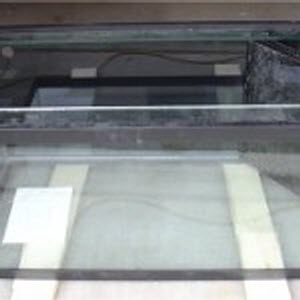
Buying a Used Aquarium
Many people, such as me, prefer to try and buy a used aquarium in an effort to save some money. Not unlike many other people, I had to learn the hard way to be able to know which tanks to pass on and which ones were a good option to buy. Hopefully I can share a few things about what I have learned so others many not have to learn the hard way like I did.
Do not purchase a tank that was built for and intended to be used as a terrarium thinking you can use it as an aquarium. Those tanks are typically made of much thinner glass than an aquarium tank. The thinner glass and/or seams will break or leak under the prolonged pressure of being filled with water. You will have to keep in mind that I am only referring to buying a used glass aquarium which excludes: filters, lights, substrate and any other equipment that may be included with the sale of a used aquarium. The below is based on my experiences. I have never owned an acrylic or plywood aquarium so I cannot offer much advice on any of those two types of aquariums. I would also never recommend buying a used aquarium without first evaluating the condition of the aquarium in person using the guidelines listed below.
Is the aquarium set-up and running?
Evaluating a tank while it is set-up and running is about the easiest situation to be in. You can visually inspect the tank for leaks. You should look for potential indicators like: external wet surfaces, external salt or hard water deposits, signs of water damage on the stand, or on the floor near the stand can all be signs of a potentially leaking tank. In addition, there are also some things you can look for, just as you would if you were buying an empty tank. Those are listed below.
Is the aquarium empty?
A lot of times (most of the time in for me at least) the used tank you are looking at buying has already been taken down and is sitting empty in a garage, basement, or in a driveway at a garage sale. This can be a little more challenging to determine the exact condition of the aquarium, but not impossible when you know at least some of the signs to look for. Those would include:
A) Inspect the seams / seals of the tank. Look for: signs of hard water stain or salt build up around the seals on the outside of the tank, or signs of hard water stains or salt build up around the base or bottom frame of the tank. All of these can be potential signs the tank was/is leaking. The below picture is just one example of what to look for.
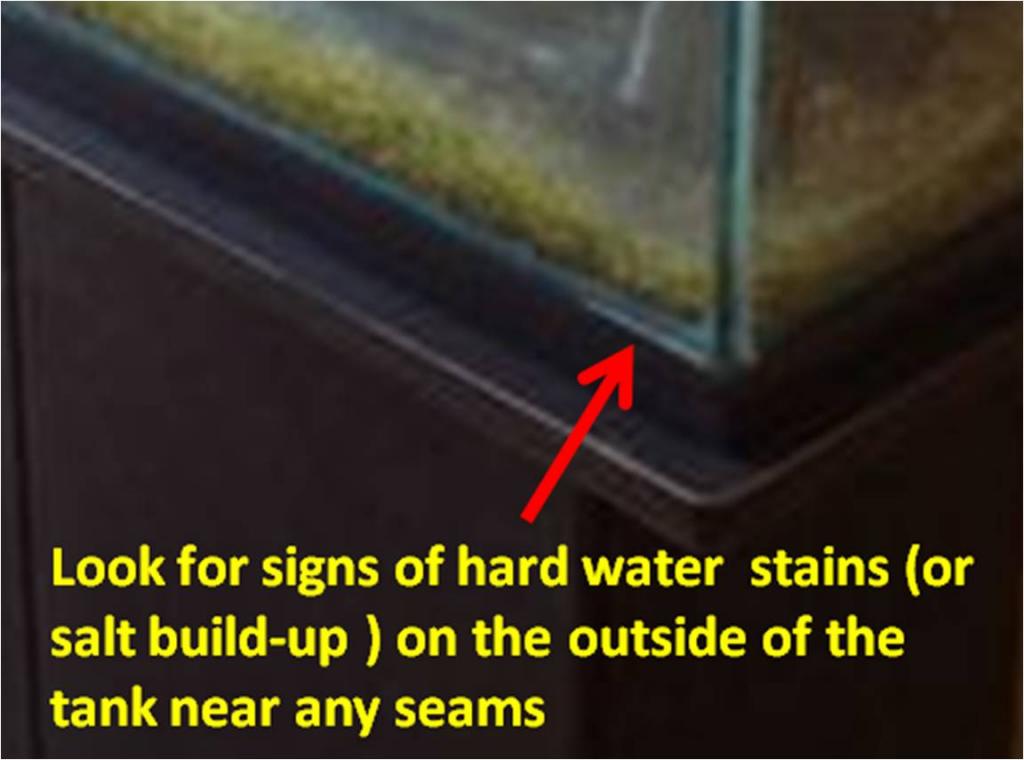
When inspecting the seals, it would be helpful to understand how the tank was assembled. A growing number of manufactures will use a two step approach. The first step would be to use a very thin coat of silicon to hold the panes of glass together. All extra silicone will be wiped off the glass leaving only the silicone between the panes of glass. On larger tanks (like 180 gallon or larger) they will use a combination of a special type of silicone along with spacers to ensure this seal will hold under the increased weight and stress of the higher water volumes. Although these spacers are used to help ensure the correct amount of silicone is applied between the glass, having used them doesn’t mean their tanks are any weaker or stronger because of it. Regardless of the size of the tank, the second step is to apply an out seal of silicone along all of the seams on the inside of the tank. This second seal will provide additional support to the tank along with ensuring the tank will hold water. When we say we reseal a tank, we are actually just replacing the outer seal.
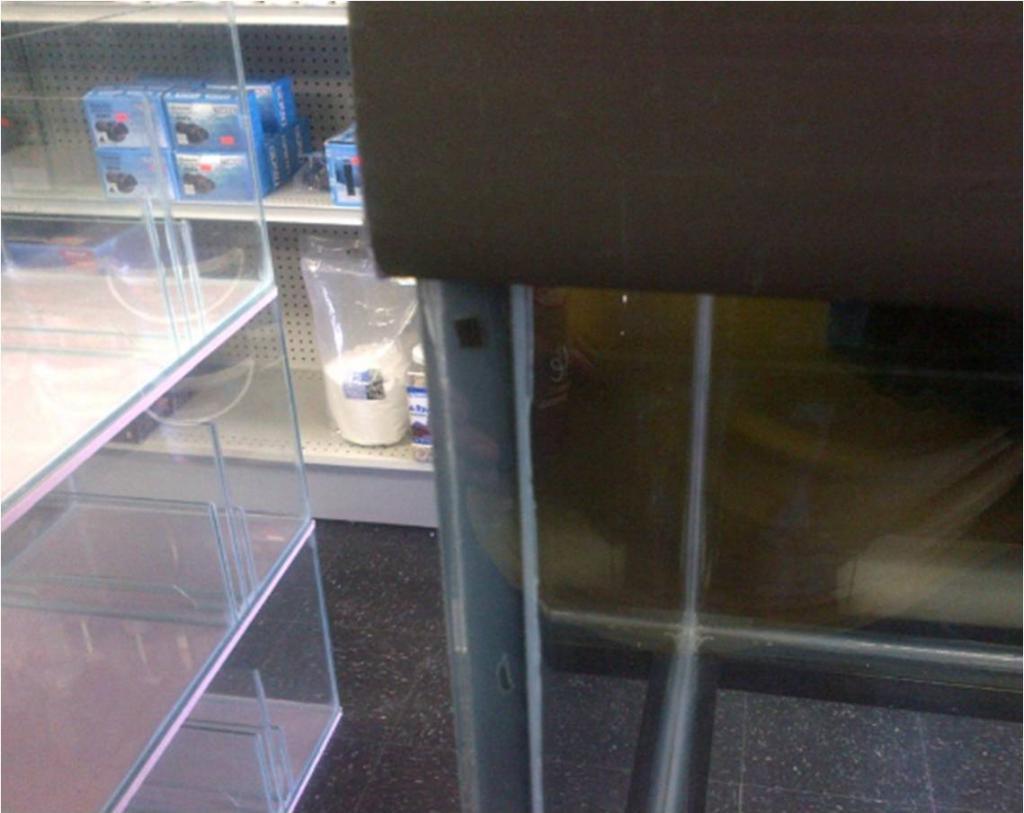
B) Inspect the surfaces of the glass and frame (if there is one). Look for scratches, cracks, or potential damage to the top or bottom frames of the tank (on tanks that have them). Also look for glass chips on the edges of the tank. I would recommend not getting a tank with cracked pane of glass as you would need to take apart the whole tank to replace that single pain as silicone will not bond to cured silicone making a “patch job” hard to predict over time. Tanks with large chips should also be avoided for the same reasons. How many/much scratches on the glass are tolerable is purely a personal preference as this will not affect the functionality of the aquarium. It would be safe to assume most used aquariums will have at least a few scratches on them. The below two pictures are just two examples.
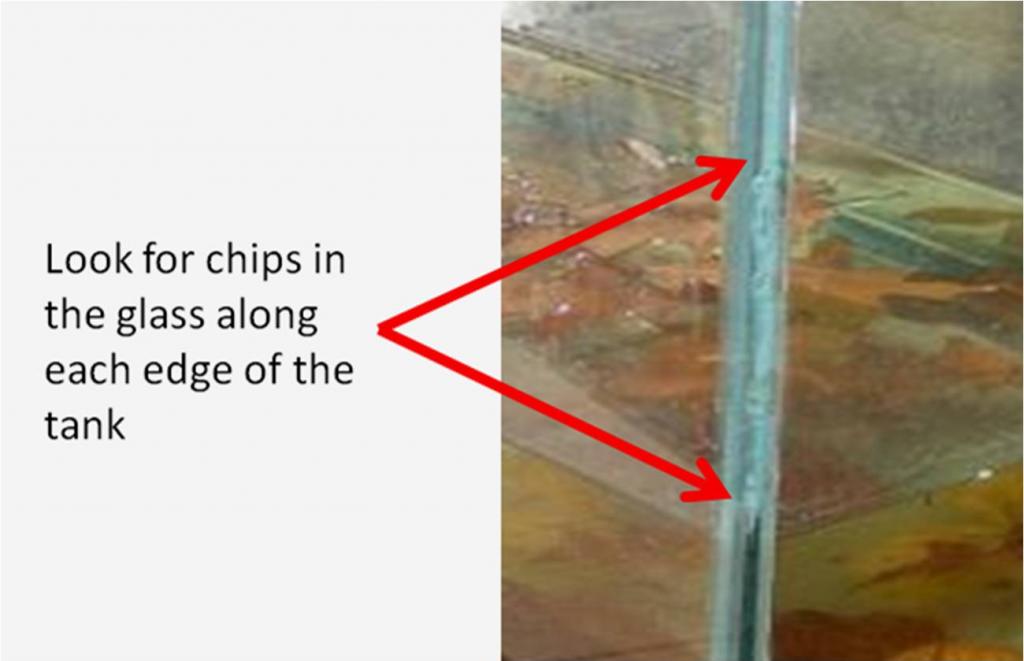
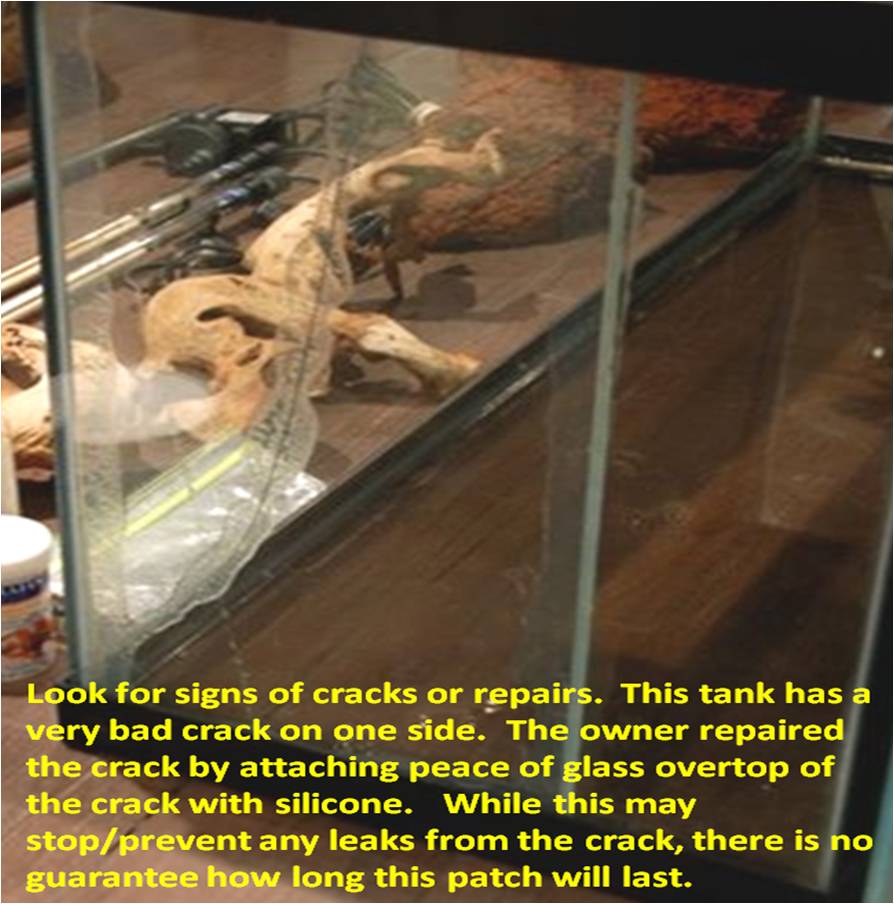
C) Inspect the silicone on the tank. Look for signs of: it starting to pull away from the glass, damaged areas, or excessive air bubbles between the silicone and glass. Any of those conditions may result in a leak at some point. There is a link at the end of this article can provide a step by step example of how to reseal an aquarium.
D) Ask the seller to fill the tank with water. You want to do this for two reasons. The first is that you want to make sure it will hold water and there are no leaks. You can never be sure the tank will hold water until you fill it, regardless of how good it may look. The second is to actually see how clear the glass really is. There could be some build-ups on the surfaces of the tank that are not very noticeable once you fill the tank with water. If you could put a light fixture over the tank you should be able to see any cracks that would also be visible once the tank would be set-up.
E) Do not let the seller rush you. Take your time to carefully look the tank over and make up your mind. You want to get a good look for all the potential conditions listed above until you have determined if you would like to buy the tank or not.
The below picture shows a frameless tank. There is no cross support in the middle of the tank. Instead, this support comes from the additional pieces of glass around the top of the tank. The black plastic on the corners/edges of the tank are not an actual frame. They are just there to enhance the appearance of the aquarium. This type of tank is sometimes referred to as a euro-braced tank. The below two pictures are of my 120 gallon tank.
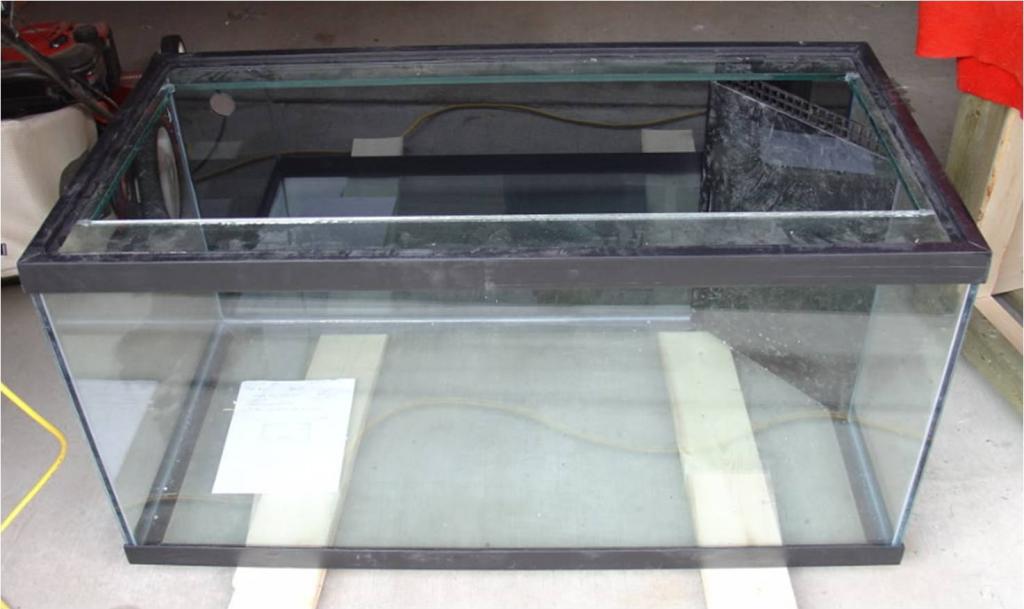
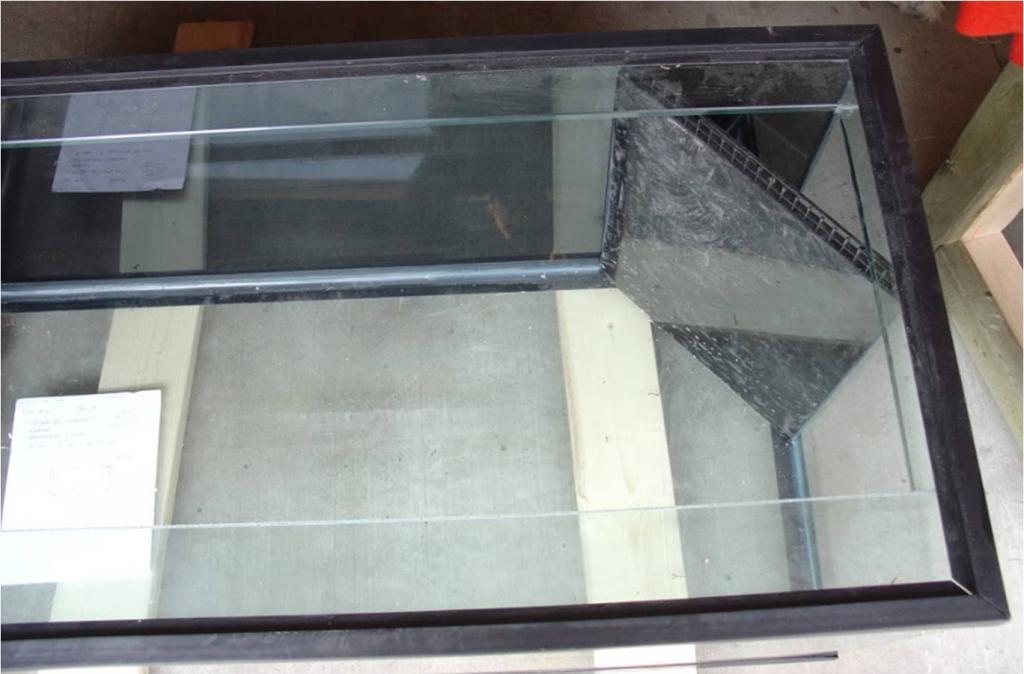
The below pic of a tank with a frame peace. There is the same frame peace on both the bottom and top of the tank. You can see the cross support in the middle is a part of the complete frame. You should never set up a tank with a broken top frame peace. The manufacture put them there to support the outward pressure the water will put on the glass and prevent the tank from leaking. You can replace these frames if you are a little handy and enjoy do it yourself projects. The below picture is a used 55 gallon tank that I bought to make a sump for my 120 gallon FOWLR tank.
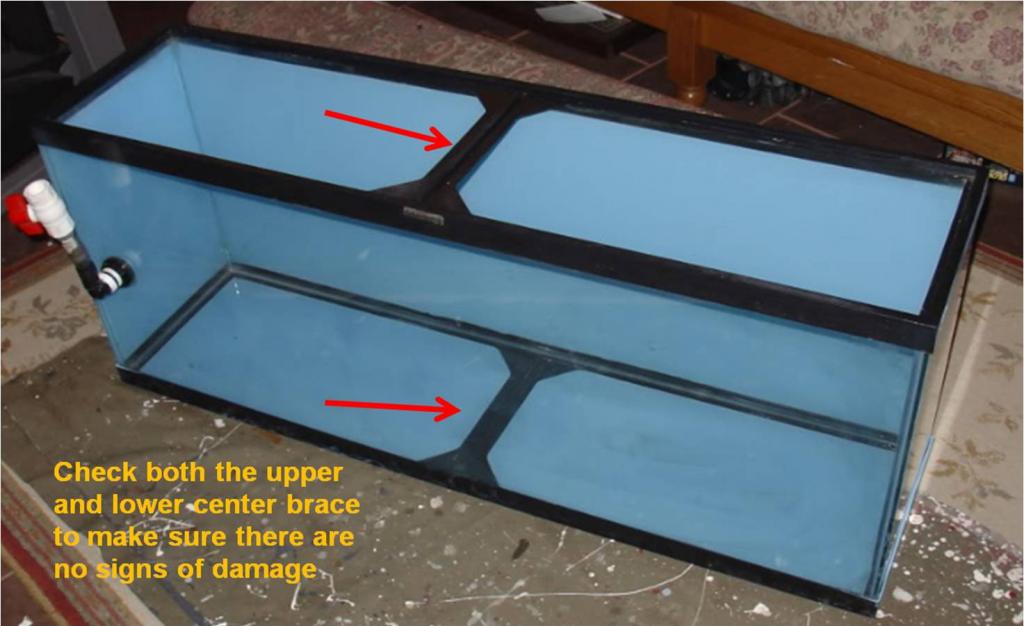
Bow front tanks will sometimes have an additional frame element in the corners of the tank. These must also be damage free.
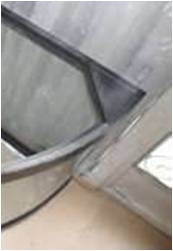
Cleaning the used aquarium
Hopefully, you have just found the size of used aquarium you were looking for at a good price. The next thing you want to do is give this a very good cleaning. There is no telling what type of nasty things could have been in that tank before you bought it. It’s always the best to clean it very well and make your tank look better than what it did when you bought.
By some accounts, the below could be considered as somewhat excessive and some of these steps can be debated. But in my opinion, if I am going to place my expensive fish and/or corals in the tank then I want to do everything practical to ensure the tank is safe for them first. It takes a little extra effort before setting up the tank but feel it is well worth it. Below is the process that I have been using when I buy a used tank:
A) Rinse out the tank with clean tap water wiping away any loose crud that might be in the tank. Wipe the tank dry with a clean cloth or paper towel.
B) Clean the tank with a 10 to 20% bleach solution followed by a good rinse with tap water and wiping it dry. This should disinfect the tank in case there was any type of parasite or some else just as nasty in the tank before it you got it. This step could be considered overkill and is debatable, but I have recently started including this step with the last used tank that I bought just for the peace of mind it brings me.
C) Fill the tank with tap water, and as much vinegar as practical, but no more than 30% as higher percentages do not seem to be more effective. This will be required to remove any calcified build up, hard water stains, and even coralline algae.
D) Run the tank with the vinegar still in it until the buildup wipes away by hand. This can take a day or two for very thick and hardened build ups but the vinegar will make it very easy for you to finish cleaning the tank if you leave it in there long enough. Power heads would be the best to use for circulating the water during this step. If you have no buildup to clean off, you could skip this step completely.
E) Rinse out the tank several times wiping the inside dry each time. This will help remove all of the vinegar from the tank.
F) Fill and run with tap water for a few days followed by empting the tank and wiping it dry. This step will help to ensure you have removed all the trace amounts of the vinegar and/or bleach solution. Some people have good luck skipping this step but I will always do this just to make sure. It will also verify for you the tank will hold water and there are no really slow leaks that could have been missed when you bought the tank.
A few last thoughts to consider
Sometimes asking about how old a tank is really will not get you much usable information in all situations. Often, I have found the current owner of the tank is not the first owner having bought the tank used as well. I have also seen tanks that were only 4 or 5 years old but in worse shape than a tank that was over 12 years old. The most important feature is the current condition of the tank and not how old it is.
As you might have already gathered, I did not mention anything about using typical house hold cleaners such as dish soap, glass cleaners, or disinfectants. Using those products to clean an aquarium is extremely risky at best. Sometimes even trace amounts of these chemicals left on any of the surfaces of the aquarium can kill all of the beneficial bacteria that are needed to keep the water safe for the aquarium inhabitants.
Regardless of the condition of the tank when you had purchased it, when in doubt, reseal it. This is a pretty straight forward process of removing the outer seal (leaving the inner seal holding the panes of glass together) and replacing it with new silicone. The below link explains the process pretty well. If you are a handy person that enjoys do it yourself projects, this is not hard to do at all. You just have to make sure you are using aquarium safe silicone. I have re-sealed most of the used aquariums that I have purchased only because I was not comfortable with how parts of the seal looked even though the tank held water even after being filled for a few days. I did not want to risk a leak when it would only cost me ~$7.00 and a little effort to reseal the tank.
http://www.aquaticcommunity.com/aquariumforum/showthread.php?t=52239
You can also drill a used aquarium if you are having trouble finding a predrilled and used aquarium. The below link explains that process pretty good as well. Once again, if you are handy and enjoy do it yourself projects, this will not be very hard for you to do. If you are not comfortable completing this yourself, you could always try finding a local glass shop to drill the hole for you.
http://www.aquaticcommunity.com/aquariumforum/showthread.php?t=76407
This is a good article when buying a used tank. I bought a used tank about 5 months ago. My only suggestion is if you buy a used tank, make sure you really think about what you want and don’t want in the tank. During the move, we separated the rock and fish, etc. I went ahead and added the eel to the tank, and after I decided to get rid of him, I almost had to break everything down again to get him out.
If your tank is leaking, is it better to buy a new one or reseal the tank you already have
if you are handy and comfortable with projects like this, I would suggest resealing the tank. You will save a lot of money that way
Please can anyone help with my question.
How much does it cost to buy a marine tank, set up, fish, running costs etc as I am looking to set up a marine tank about 1 meter long in size.
Have £1,500 would that be suffice as to buy all new.
Kind Regards
Nemomarine
nemomarine, the cost will vary greatly depending on the type of marine aquarium that you want to set up and what you want to keep. On this side of the pond, I have always used a rule of thumb of around $10 USD per 1 US gallon, but that is for a complete set-up and not just the tank. You can cut that number in half purchasing a used set-up (tank + equipment). The below link has some great deals on stuff from time to time and is a UK based site
http://www.ultimatereef.net/forums/index.php
Hi Cliff,
I wanted to ask this… I have a 90 Gallon Bow tank. In the front of the tank on the top the plastic that wraps around the whole tank is cut in the front of the tank about 10 inches from both sides. Both of those cuts in the plastic is where I get a drip. To me it appears like water is building up under the plastic frame and above the top of the glass. I tried using black aquarium glue to pack it and that will work for a week or so before it drips again. The water level is about 1 inch below the very top of the plastic. If I manipulate the filter I can make the water level lower solving my problem but the tube that feeds the water down through the predrilled whole at the bottom does not get enough water flow to move the bio ball underneath the tank. Any ideas. Thanks in advance,
Joe
Can you post a pic Joe ? That would help a lot here for me to be able to get you better suggestions
Fantastic article, Cliff! Helped me a lot! Anyone know of best type of 55-gallon aquarium I should purchase for two male slider baby turtles. I’ve researched a lot about the turtles and set up of the aquarium but would really like direction when attempting to purchase used aquarium(maybe new if price is right).
Thank you so much for your article- my two cents: bought a used 130g (5/8″ class) and had the whole thing resealed by a professional aquarium repair service- cured 3 weeks thereafter. Set it up on Friday with local aquarium store personnel and cycled water ready to go. Monday morning- idyllic. Fish and owner (me) so happy- 2 hours later: frantic call from owner’s daughter- water pouring out sides and from major crack on back of aquarium. Saved fish, plants and gravel to a 65g I had but not hardwood floors or drywall. Consensus is the aquarium was very slightly unlevel on bottom on stand. Comfort? My “warranty” applied to the seals on the aquarium (who cares?) not the damage a 130g torrent of water roaring through my house caused. Too traumatized to have the tank repaired- just bought a new 125g (Aqueon) and stand to be installed by the shop once the insurance carrier’s contractor finished repairs. Moral? Make sure the aquarium is LEVEL.
Very good advise for any tank (new or resealed). They all must be level or things like that can happen pretty easy
I’ve been looking for a replacement top frame with center brace for my 100 gal tank . does any one know a place where I can find one
I have used the below company in the past
http://www.glasscages.com/
Hi would like to say great article . I have just bought an 100 litre tropical tank it was in quite bad state the condition was good but the alge was bad. I scrubbed away anyway 1 hour and half later it was crystal clear and it was filled for a test . There was some gravel left in it and I kept it in because I knew it had only been drained recently and I wanted instant bacteria cycle .My question was about when you were talking about using bleach I’m not really comfortable about doing this but I’ve gave a really good scrub with boiling water and dried, the water when filled smells like the tank when I first got it does this represent anything it’s just like algae like at a lake egg ish lol if I skipped the step about beleach will this have an effect like parasites how do I tell , is there anything i could go buy that’s safe thanks
If the tank sat empty and dried out, there is minimal chance of anything surviving. However, I would still suggest starting fresh by cleaning the whole tank and even washing or replacing the substrate. There would not be enough love bacteria in the substrate to cycle your tank.
Hi I have purchased an octagon tank used it was running when I purchase it. Checked for leaked and there were none. Got it home and looked ur over the silicone on the inside top is green and pulling away from the glass. Do you think if I reseal it, that would work or was this a bad purchase.
I would not worry too much. Just reseal the tank and you will be fine. This can be common on older tanks
I really like how you pointed out that I should look for chips in the glass and inspect the entire aquarium. We have a lot of fish in a fish tank but we are looking to upgrading to a bigger tank and are looking at used ones. Hopefully, we can find a good tank that will be able to hold all of our fish and the many new fish that we are looking at getting.